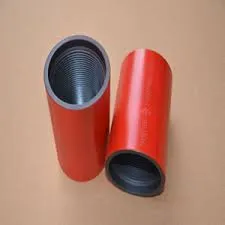- Afrikaans
- Albanian
- Amharic
- Arabic
- Armenian
- Azerbaijani
- Basque
- Belarusian
- Bengali
- Bosnian
- Bulgarian
- Catalan
- Cebuano
- Corsican
- Croatian
- Czech
- Danish
- Dutch
- English
- Esperanto
- Estonian
- Finnish
- French
- Frisian
- Galician
- Georgian
- German
- Greek
- Gujarati
- Haitian Creole
- hausa
- hawaiian
- Hebrew
- Hindi
- Miao
- Hungarian
- Icelandic
- igbo
- Indonesian
- irish
- Italian
- Japanese
- Javanese
- Kannada
- kazakh
- Khmer
- Rwandese
- Korean
- Kurdish
- Kyrgyz
- Lao
- Latin
- Latvian
- Lithuanian
- Luxembourgish
- Macedonian
- Malgashi
- Malay
- Malayalam
- Maltese
- Maori
- Marathi
- Mongolian
- Myanmar
- Nepali
- Norwegian
- Norwegian
- Occitan
- Pashto
- Persian
- Polish
- Portuguese
- Punjabi
- Romanian
- Russian
- Samoan
- Scottish Gaelic
- Serbian
- Sesotho
- Shona
- Sindhi
- Sinhala
- Slovak
- Slovenian
- Somali
- Spanish
- Sundanese
- Swahili
- Swedish
- Tagalog
- Tajik
- Tamil
- Tatar
- Telugu
- Thai
- Turkish
- Turkmen
- Ukrainian
- Urdu
- Uighur
- Uzbek
- Vietnamese
- Welsh
- Bantu
- Yiddish
- Yoruba
- Zulu
Understanding the Purpose and Uses of a Bull Plug in Various Applications
Understanding the Bull Plug Uses and Significance
In the realm of mechanical engineering and plumbing, various tools and fittings are designed for specific functions. One such component that sometimes garners curiosity is the bull plug. While it may not be a household name, the bull plug plays a vital role in a number of industrial applications.
What Is a Bull Plug?
A bull plug is a type of plug with a distinctive design, often used in pipes and fittings. It typically features a tapered or rounded design that allows it to fit snugly into an opening, effectively sealing it off. This characteristic makes it invaluable in various settings where it is necessary to prevent flow from one section of a system to another, or to cap off a pipe temporarily or permanently.
Bull plugs are commonly made from different materials, including metals such as brass or stainless steel, as well as durable plastics. The choice of material often depends on the specific application, such as the type of fluid being transported (water, oil, gas, etc.), the pressure requirements, and the environmental conditions (exposure to chemicals, temperature variations, etc.).
Primary Uses of Bull Plugs
1. Pipeline and Plumbing Applications One of the most prevalent uses of bull plugs is in plumbing systems. When a pipe needs to be taken out of service for maintenance or repair, a bull plug can be inserted into the end of the pipe to prevent leakage. This is essential for maintaining safety and efficiency within plumbing networks.
2. Hydraulic Systems In hydraulic applications, where fluids under pressure are transferred through pipes, bull plugs are utilized to seal off unused ports or to create a closed loop in a hydraulic circuit. This ensures that the system operates correctly and prevents any hydraulic fluid leaks.
what is a bull plug used for

3. Industrial Equipment Machinery and industrial equipment often have ports that can be sealed with bull plugs. For instance, when equipment is being refurbished or taken offline, these plugs can prevent contaminants from entering the system, which is crucial for maintaining the integrity of the machinery.
4. Testing and Maintenance During the testing phase of various systems, bull plugs are used to isolate sections of a pipeline or vessel. This isolation allows for pressure testing or inspections to take place without interfering with the rest of the system, ensuring accurate results and system integrity.
Advantages of Using Bull Plugs
- Versatility Bull plugs can be utilized in numerous applications, making them a versatile component in mechanical and plumbing systems. Their ability to fit various pipe sizes and types makes them a go-to solution for many engineers and plumbers.
- Ease of Installation The tapered design of bull plugs allows for quick and easy installation. They can be easily removed and replaced, facilitating maintenance and adjustments.
- Cost-Effective Given their simplistic design and ease of use, bull plugs are often a cost-effective solution for sealing pipes compared to more complex fittings or seals.
Conclusion
The bull plug may seem like a simple component, but its role in mechanical and plumbing systems is crucial. By providing an effective means of sealing pipes and preventing leaks, bull plugs contribute significantly to the safety and efficiency of a variety of systems. Whether in plumbing, hydraulic applications, or industrial machinery, understanding the function and application of bull plugs can help ensure that systems operate smoothly and effectively. As industries continue to evolve, the reliance on reliable components like the bull plug will remain a cornerstone of successful engineering practices.
-
Tubing Pup Joints: Essential Components for Oil and Gas OperationsNewsJul.10,2025
-
Pup Joints: Essential Components for Reliable Drilling OperationsNewsJul.10,2025
-
Pipe Couplings: Connecting Your World EfficientlyNewsJul.10,2025
-
Mastering Oilfield Operations with Quality Tubing and CasingNewsJul.10,2025
-
High-Quality Casing Couplings for Every NeedNewsJul.10,2025
-
Boost Your Drilling Efficiency with Premium Crossover Tools & Seating NipplesNewsJul.10,2025







